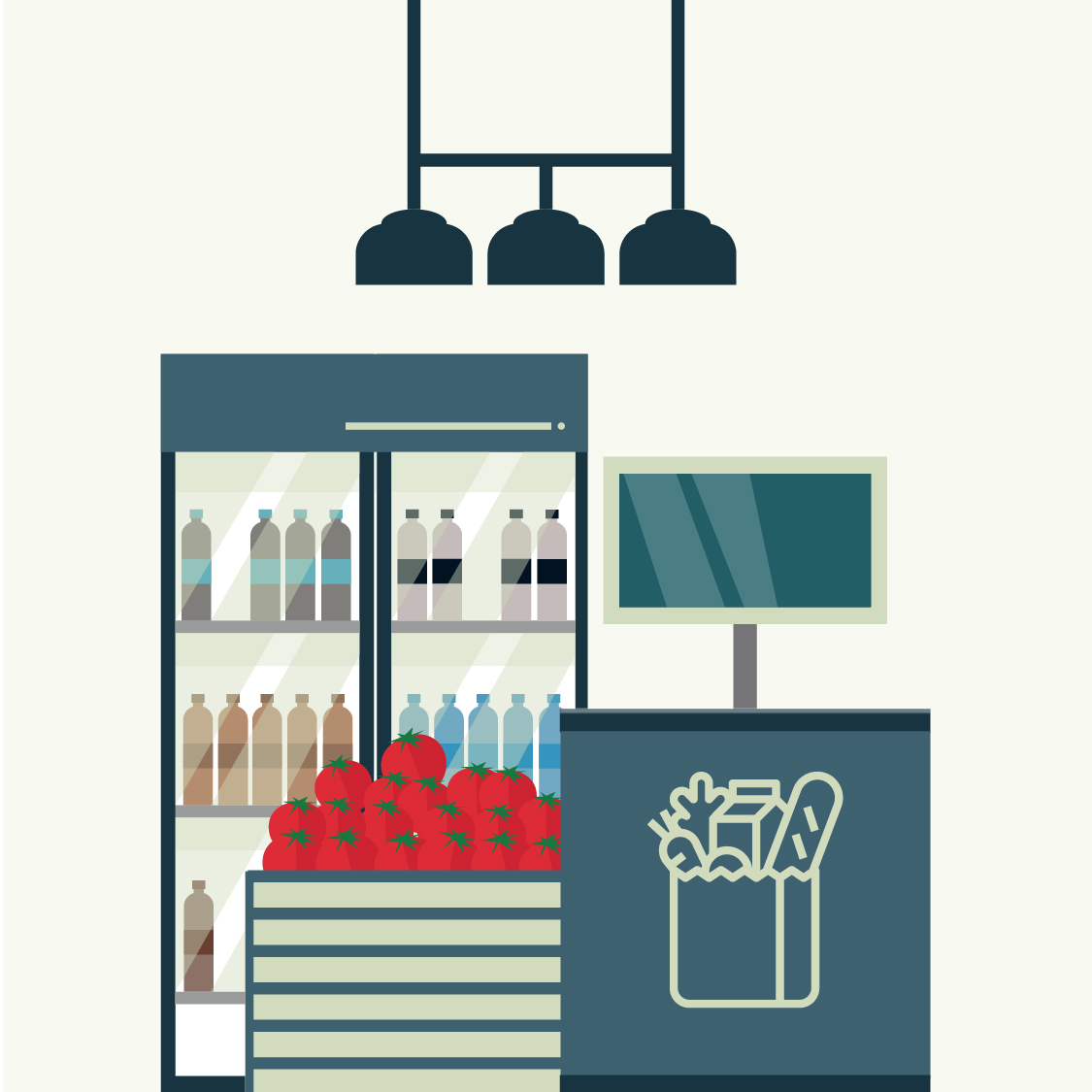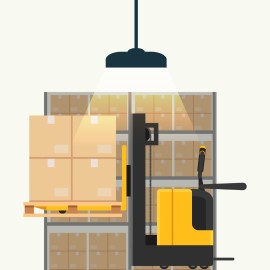Upgrade Types
Below you can search by the type of energy upgrade you’re after. Alternatively, if you run one of the following business types, you can take a look at tips specific to your sector:
Behaviour Change
Behaviour and the way we use our spaces can have an enormous impact on energy consumption. Along with the myriad financial and environmental benefits of installing efficient appliances, when a business or organisation shows its dedication to efficiency and sustainability, employees have been shown to become more motivated and further assist in the process. Providing bike racks, offering incentives for carpooling, adding indoor plants, electing green champions and having open conversations around sustainability in the workplace are all great ways of further boosting employee participation and favourable outcomes in this area.
Coffee Machines
Consider installing (or using a pre-installed) 7-day timer to turn your coffee machine off when not in use for long periods (like overnight or when closed).
Cool Rooms and Walk-in Freezers
Cool rooms and walk-in freezers are large energy users, with energy waste often contributing at least 25% of the load - therefore a careful review of the efficiency of all installed refrigeration components is worthwhile.
Optimising the performance and longevity of older cool rooms, typically 10 years or more in service, often means a full system replacement. Upgrading to a new system not only ensures enhanced energy efficiency but also allows for specific design considerations.
Here are some tips for running your existing cool room as efficiently as possible:
- Ensure door seals are cleaned and seal well to retain cooling where needed.
- Install plastic strips to the door to reduce cooling loss when open.
- OHS standards specify that refrigeration (including cool rooms) is maintained at 4°C, and freezers at -18°C
- Stack high use items near the door for quick access.
- Keep units at 80% full for best efficiency.
- Old equipment - including most plant older than 10 years - may be best replaced entirely, given the potential for energy cost savings. For equipment in reasonable condition, a range of retrofits can improve performance.
- Confirm that insulation panels are intact, sealed airtight at the joints, and include ceilings and floors. A minimum R-value of 4.5 is recommended for most applications. Ensure insulation on coolant pipes is in place and working well.
- Ensure that an adequate maintenance program is in place - that encompasses refrigerant levels, the fridge seals, condensers and evaporator coils, motor function, and doors.
- Where possible ensure that defrost time settings are out of key peak hours, this helps to minimise demand charges.
- Develop staff policies for loading and unloading practice that minimise cooling load, and avoid under and over-stocking and blocking the evaporator. Curtain strips are often useful in reducing air loss through doors. Alarms or automatic doors can help prevent doors being left open.
- Ensure coolroom lighting is efficient LEDs, controlled by sensors or timers if necessary to minimise use.
- Ensure that cooling temperatures aren’t colder than needed for your stock. Food safety standards require refrigeration below 5°C, and freezers at -18°C.
- High efficiency motors and variable speed drives can be retrofitted to reduce energy consumption of fans, pumps and compressors. Control systems can be used with variable speed drives to reduce consumption, especially where cooling needs vary.
- Monitor energy use data regularly - either for your entire site, or via submeters - preferably in conjunction with refrigeration temperatures - to allow potential faults to be detected early.
- When introducing a new cool room system, it's crucial to plan for both current and future needs. This can include planning for sizing to meet existing demands while allowing for potential future expansions. Strategic placement of cooling equipment within the system ensures optimal performance and efficiency over time.
- Routine testing, thorough cleaning, and consistent maintenance are integral for cool room efficiency. Regularly logging refrigerant use and monitoring system temperatures enable proactive management, aiding in the early detection of potential issues and ensuring peak operational performance.
- Avoid glazing in cold rooms where possible. If they are needed, incorporate double glazed for refrigeration, and triple-glazed transparent windows for freezers to help maintain consistent temperatures and reduce energy losses. These windows enhance insulation, minimising heat exchange with the surroundings and contributing to overall energy savings.
Double-glazed Windows
Single-glazed windows typically account for up to 40% of heat loss (winter) and up to 87% of heat gain (summer). Adding a window film or upgrading to double glazing can be an effective way to reduce energy consumption. If you suspect your windows may be leaking hot or cold air through gaps, see draught proofing for more information.
Draught Proofing
There are many places where air might leak in and out of your premises, including wall vents, exhaust fans, and gaps around windows, doors, floorboards and skirting boards. Some draught proofing can be done yourself as part of routine maintenance, and some may need professional services. If gas appliances are still onsite, remove them first before draught proofing too much, as carbon monoxide can be an issue from unflued gas heaters.
Electric Vehicle Fleet
Electric Vehicles (EVs) are revolutionising transportation and logistics in small manufacturing businesses, offering sustainable and cost-effective solutions for various purposes such as commuting, cargo transport and internal operations. EVs encompass a diverse range of vehicles, including cars, trucks, and even forklifts, powered by electricity stored in batteries.
Their adoption in small manufacturing environments presents numerous benefits, including reduced carbon emissions, lower operational costs, and enhanced operational efficiency. Moreover, the lower maintenance requirements of EVs compared to internal combustion engine vehicles result in reduced maintenance expenses over their lifespan, providing long-term cost savings for businesses.
For manufacturing operations involving material handling, electric forklifts offer an eco-friendly alternative to their diesel or propane counterparts. Electric-powered forklifts operate silently and produce zero emissions, making them suitable for indoor use without the risk of air pollution. Additionally, their lower operational noise levels contribute to a quieter work environment.
Implementing EV charging infrastructure within small manufacturing facilities is crucial to support the transition to electric transportation. Installing charging stations allows employees to conveniently charge EVs during work hours, ensuring an uninterrupted workflow and promoting employee adoption of sustainable commuting options.
In addition, the integration of smart charging systems enables optimised energy usage, allowing for efficient charging of business vehicles during off-peak hours when electricity demand is lower. If your business also instals solar PV, this can be a great way to make use of the daylight hours and essentially run your vehicles for free.
Entrances
Consider ways that your store might be able to mitigate temperature loss through the front door. The simplest way is to keep the doors closed, so automatic or self-closing doors are recommended.
Go All Electric
Natural gas, or methane, is a significant contributor to global warming and poses considerable health risks. Apart from environmental concerns, the rising cost of gas compared to electricity, especially renewable-sourced electricity, emphasises its inefficiency and economic burden on businesses. Transitioning solely to electricity not only aligns with sustainability goals but also offers financial advantages.
Consolidating energy consumption under a single electricity bill simplifies administration and reduces overall operational expenses. Recognising the need for sustainable energy practices, the Victorian Government's recent update to the Gas Substitution Roadmap introduces rebates incentivising businesses seeking to shift away from gas-dependent systems. This initiative aims to support and encourage businesses in embracing cleaner, more cost-effective energy alternatives.
The main offenders of gas within hospitality businesses are in hot water, heating, ovens and cooktops. The most efficient way to shift the kitchen away from gas is to replace any gas ovens with electric ovens, and replace gas cooktops with induction cooktops. This provides the best energy efficiency and helps to keep the kitchen cooler as all the heat goes into the cooking.
Unlike electric cooktops, induction cooktops are highly energy efficient, very safe, as well as heating up quickly and providing instant and precise temperature control. Note that for pans to work on induction cooktops they will need to have a magnetic base (iron, steel, copper). To check if your pans will work, get a fridge magnet and see if it sticks to the bottom of the pan. If it does it will work, otherwise it will need replacing.
Heating & Cooling
A significant user of energy in most workplaces, Heating, Ventilation and Cooling (HVAC) should be designed to meet your business' requirements as efficiently as possible. The first thing to consider is maintaining a comfortable temperature through effective insulation.
These heating and cooling tips can be applied to all business types:
- Regular professional maintenance is critical for HVAC systems, addressing filters, refrigerants, evaporator coils and condensers, fan motors, and the integrity of ducts and seals.
- It is important to set the thermostat within sensible limits (18-20°C during winter, 23-25°C during summer) and ensure the system is switched off outside work hours.
- Thermostats should be placed to reflect internal temperatures only - they should be positioned to avoid influence from external temperatures or other sources of heat or cold, such as on internal walls or away from the entry door to the store.
- If you rent the premises and wish to upgrade the HVAC systems, the best course of action is to speak with your landlord - see Making a Plan.
These tips are more applicable to smaller businesses, such as offices, retail and hospitality:
- Where suitable, reversible ceiling fans are an excellent and cheap form of cooling and can also assist in winter to help destratify the air and push the warmth back to where it's needed, reducing the heating and cooling load. The most efficient cooling is through using fans in conjunction with an air conditioner.
- For hospitality businesses who provide outdoor dining, many cafes and restaurants have standalone or reticulated gas heaters, which can be expensive, polluting, and odorous. There are now many great options for outdoor electric radiant heaters (infrared heating is most efficient for this situation), and some businesses choose to have blankets on hand for customer comfort instead of, or as well as, outdoor heating.
- When existing HVAC equipment is inefficient, or approaching its end of life, consider the implementation of efficient zoned reverse cycle electric systems with variable speed drives for motors, and smart controls to vary operation with demand.
These tips are specific for larger workplaces such as manufacturing:
- Heated jackets for employees working in colder environments can reduce the reliance on excessive heating.
- Installing radiant electric heat panels (infrared type are best) at key locations within the workspace can provide targeted warmth, optimising energy usage by focusing heat where it's needed most.
- For cooling, employing large fans and evaporative cooling systems used together can effectively regulate temperatures in most small manufacturing settings.
- Large fans aid in air circulation, providing up to 6 degrees in cooling effect for staff and promoting ventilation and cooling without consuming excessive energy.
- Evaporative cooling, an energy-efficient alternative to traditional air conditioning, can significantly lower indoor temperatures by utilising the natural process of water evaporation; though it’s important to note that evaporative cooling does use water and only works in low humidity conditions, making it a good option for keeping industrial warehouses cool during Victorian summers (when it’s not humid).
- Mitigating heat gain from direct sunlight exposure can be achieved by shading large thermal mass areas, such as tilt slab concrete walls, with strategically placed plantings of trees or large shrubs. This natural shading helps reduce the heat absorption of the building's structural elements, which minimises the need for additional cooling.
- Apply a heat reflective paint on the concrete walls. This approach proves especially effective for west-facing areas, ensuring a more temperate indoor environment.
Hot Water
Water usage isn’t always the first thing that comes to mind when considering energy efficiency, but heating water and maintaining it at temperature can be a big cost to a business.
Heat pump hot water systems
The most energy efficient way to heat water for your business is with a heat pump hot water system. Heat pumps employ the same technology as your fridge or reverse cycle air conditioner, using a refrigerant to absorb heat from the outside air and through a process of compression and expansion, are able to produce heat very efficiently.
For one unit of electrical energy, four or five units of heat energy can be produced, resulting in 60-75% less energy consumption than a traditional electric resistive hot water system. Additionally, Small-Scale Technology Certificates (STCs) are part of a Federal Government rebate scheme offered Australia-wide on the purchase of renewable energy technologies, which includes heat pump hot water systems. There are additional Victorian state government rebates through Victorian Energy Upgrades (VEU) available for installing these systems as well.
Heat pump hot water systems work well with solar photovoltaic (PV) systems and offer a way of storing renewable energy (a thermal battery) for use that night or the next morning.
Upgrading your system
Whether your current hot water system is gas or electric, the upgrade can be relatively simple. As most hospitality businesses only rent the premises, it is a good idea to speak with the building owner well ahead of time, while your current hot water system is still functioning, and put a plan in place to replace the hot water system if and when it eventually breaks, with a heat pump. For more information, see Making a Plan.
Making the most of your current system
In the meantime, it may be worth insulating your current hot water system, as uninsulated hot water pipes can lose up to 3kWh/day, meaning you’ll be paying several hundred dollars more on your energy bills each year. It is recommended that you ask your plumber how best to insulate the three main components of the system - the pipes, the pressure and temperature relief valve, and the cylinder. YourHome goes into detail about the best way to go about this for different systems.
To reduce the overall cost of hot water, it is recommended that businesses switch their tap heads to water efficient heads or install flow restrictors. We also suggest ensuring that dishwashers are maintained regularly and low energy or ‘eco’ mode is used where available. Modern commercial dishwashers use much less water than older models and usually heat their own water very efficiently.
Some sites use very little hot water, and these often have instant gas units. Upgrading these to heat pumps is often unnecessary, in terms of cost and space required, given the low usage. Where the hot water demand is low and generally only a basin or kitchen tap, a small electric instantaneous unit at the point of use is usually most efficient and more cost effective to do.
Insulation
Insulation plays a pivotal role in optimising energy efficiency and maintaining comfortable working conditions within all business types. Adequate insulation tailored to the local climate not only minimises heat transfer, but also significantly reduces the reliance on heating and cooling systems, offering substantial energy savings and cost efficiencies for businesses. Often roof space is the easiest to retrofit.
In Melbourne's climate, recommended R-values (i.e. thickness) for insulation typically range from R4.5 to R6.0 for ceiling insulation and between R1.5 to R2.5 for wall insulation, depending on the specific requirements of the building and its usage. By installing insulation with these recommended R-values, businesses can effectively mitigate heat transfer through the building envelope, thereby reducing heat gain in summer and heat loss in winter.
Retrofitting insulation to a business can be challenging depending on the business type. Office areas within the premises can often easily retrofit insulation batts to suspended ceilings.
Properly insulated premises create a thermal barrier that helps maintain consistent indoor temperatures, lessening the need for extensive heating during chilly winters and excessive cooling in hot summers. Consequently, businesses can experience lower energy bills while reducing their carbon footprint by decreasing energy demand and associated greenhouse gas emissions.
Lighting
In all business types, the first action should be to replace all lights, including high bay and refrigeration lights, with efficient LEDs. Investigate rebate options in your area, as this type of upgrade has historically attracted State Government subsidies, such as the Victorian Energy Upgrade Program.
Depending on your business type, you could consider installing lighting control, like sensors or timers. This will ensure that no lights are left on overnight or while the area is not being used. Ensure low use areas such as toilets are on motion sensors. If there are any overlit areas, consider de-lamping these by removing globes or tubes. At times where there are no staff or customers on-site, only security lighting should be left on.
Making a Plan
Even if you aren’t ready to make upgrades yet, it’s worth having a plan in place for upgrading the energy efficiency of your business.
Hot water systems
When it comes to hot water systems, there are a few options in terms of actions. The first is to make a plan to install an efficient system and wait until the hot water system dies to do so. Generally this is the best course of action if the system is gas and/or not used very often. The second is to install a new system before the current one dies, which is recommended if your system is electric and usage is particularly high.
As mentioned in the Hot Water System section, the best technology currently is a heat pump hot water system. These are incredibly energy efficient and a qualified tradesperson can replace a gas or electric system with relative ease. If you would eventually like to upgrade to a heat pump hot water system, do your product and supplier research early, so that when the hot water system dies (inevitably in the middle of service), you can make the call quickly and easily. Ensure that your landlord is on board with the plans that you make.
Heating and cooling and solar
For heating and cooling systems and solar PV, it’s worth looking into what potential rebates might be available (see Resources), and even getting some quotes. While these might expire before you are ready to install, it will give you an idea of both the cost and potential savings to be realised.
Approaching the conversation
If you rent the premises, it is worth speaking with your landlord about the energy efficient changes you wish to make, in particular those for which the landlordㅡnot youㅡis financially responsible. This may include heating and cooling, hot water systems and solar PV.
When initiating these conversations, it’s important to approach your landlord with a clear goal but also an open mind. Before meeting, make a list of what you would like to achieve, how you would like to achieve it, and how it would be mutually beneficial.
If you have a long-term lease, it might be worth making a financial contribution to the changes you wish to make, particularly as it will be you who benefits from the savings rather than the landlord. This might mean, for example, obtaining a quote for a heat pump hot water system, estimating your cost savings, and using these figures to determine how much you would be willing to contribute towards the system.
When speaking with the landlord, be sure to mention that energy efficient changes will generally increase the value of the premises for future lease or sale.
Office Appliances
If your business has a fridge containing non-perishable items (such as a vending machine or soft drinks fridge), it may be possible to install a fridge timer, ensuring the appliance is switched off outside work hours. This has the capacity to reduce your energy consumption for that particular appliance by over two-thirds.
Computers, monitors and other office appliances that don’t need to run overnight (e.g. urns) should be shut down and switched off to save power - the few minutes it takes to switch them back on in the morning will pay back many times over!
The Victorian Energy Upgrade program also provides substantial rebates for a variety of products including heating and cooling, refrigerators, and hot water systems.
Pumps and Fans
Variable Speed Drives (VSDs) for pumps and fans can cut motor energy usage substantially, offering precise control over the speed and torque of electric motors to match the required load. Reducing motor speed by 20% can reduce power required by 50%. By dynamically adjusting the motor's operating speed based on the actual workload, VSDs optimise energy consumption and reduce unnecessary energy wastage associated with fixed-speed motors. In manufacturing processes where machinery operates at varying speeds and capacities, VSDs enable a more efficient and tailored approach to energy utilisation.
In addition to energy efficiency, VSDs offer several other benefits in small manufacturing. They contribute to a smoother operation of equipment, reducing vibrations and improving overall precision in manufacturing processes. The ability to control motor speed and torque with precision also enhances process control and flexibility, enabling businesses to optimise productivity and product quality.
Refrigeration Cabinets and Small Refrigeration Units
Many retail and hospitality businesses have refrigerated display cabinets (RDCs), refrigerated storage cabinets (RSCs), ice cream freezer cabinets, and scooping cabinets. There are a few key tips to be aware of in lowering energy consumption for these items.
Strategic tips and upgrades improve energy efficiency in refrigerated cabinets:
- Review the storage needs of your chilled products, and manage your fridges to meet them
- Keep the doors closed when not accessing the unit
- Utilise timers that pause refrigeration overnight or when closed for a period of time for non-perishable items like soft drinks
- Use smart temperature controls to optimise cooling where external conditions and stock needs can change
- Old RDCs (especially those predating 2012) are best replaced by new 'high efficiency' units, to take advantage of significant advances in recent units (see the Australian Government's Energy Rating website)
- Retrofitting glass doors on existing cabinets, where possible, will achieve significant energy savings. Install low emissivity and/or double glazed doors where possible, and consider upgrading existing doors to low-e/double glazing
- Where glass doors are not practical, adding clear plastic strip curtains allows easy customer access and helps retain cooling in the units.
- Fluorescent cabinet lighting should be replaced with efficient LEDs
- Other retrofits such as 'aerofoil' barriers that limit the loss of cold air are a straightforward intervention to reduce chilled air loss and are particularly effective when used overnight when closed.
As for all fridges, cleaning and checking seals, regular maintenance of fans, motors, condenser coils and fridge seals is particularly important for ongoing efficient operation.
Solar PV
Solar photovoltaic (PV) systems are a powerful asset for all kinds of businesses, harnessing sunlight to deliver sustainable solar power to the premises. Whether interconnected with the grid or a battery system, solar PV offers a reliable energy source while potentially enabling feed-in tariff benefits when excess power is redirected back into the grid.
Most roofs that are structurally sound, and unshaded, are suitable for hosting rooftop solar. You can get a quick free quote for solar PV from multiple suppliers, ensuring to take into account your current and future electricity usage.
There are various solar calculators available, such as the solar and battery storage sizing and payback calculator from Sunspot. Solar system sizing is flexible. Where funds are limited a smaller system is a worthwhile measure to cut emissions and running costs. A larger system can also be worthwhile, to accommodate future electrical loads. Additionally, the rebates are reducing over time, so the sooner you install it the better to start enjoying the benefits of solar PV.
If you rent the premises for your business, you will need to speak with the building owner about how you can work together to install a solar PV system. For more information, see Making a Plan.
Small manufacturing sites usually have the benefit of clear and large expanses of roof space which is ideal for solar PV. There are also a variety of no upfront cost funding mechanisms for businesses such as solar leasing, environmental upgrade agreements and energy efficiency improvement loans from financial organisations.
Waste Management
While not energy-related as such, food waste can play a big role in a business’s overall emissions, and taking steps to reduce food waste can provide an ‘easy win’ from a sustainability perspective.
Use what you can, give away anything you don’t need and won’t use (i.e. to staff, local charities and homeless shelters), and only throw out what you must. Phone or visit your Council website to find out if your Council offers a commercial waste collection service.
Alternatively there may be local businesses and not-for-profit organisations (including within the agriculture sector) who offer a collection service for these organics. These can then be turned into compost, thereby avoiding methane emissions from the breaking down of organic waste in landfill.
Zoning off Conditioned and Unconditioned Spaces
Where possible, create a physical barrier between areas which are air conditioned and those which aren’t, such as a door or heavy curtain between the main store and back of store or office areas.




